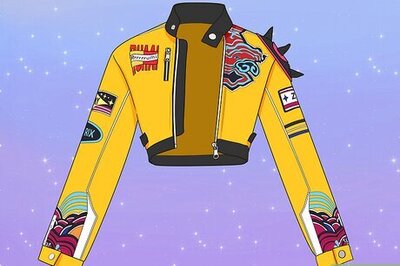
views
The summer of 2020 saw the United States’ biggest protests for racial justice and civil rights in a generation.
The nation watched in horror as a video showed the death of George Floyd, a Black man gasping for air and calling for his mother as a white police officer knelt on his neck for nearly nine minutes.
Floyd’s death in Minneapolis on May 25 forced a new national reckoning about racial injustice and gave a global profile to the Black Lives Matter movement that has emerged in recent years to protest the deaths of African Americans in police custody.
Despite a worsening COVID-19 pandemic, tens of thousands took to the streets to demand change – first in Minneapolis, and later in New York, Washington, Portland and elsewhere – many of them chanting Floyd’s dying words, “I can’t breathe!” The demonstrations were largely peaceful, but as anger boiled over some protesters clashed with police and stores were looted or set on fire.
Republican President Donald Trump criticized the protests and promised to restore law and order, although opinion polls showed Americans largely supportive of Black Lives Matter.
In June, U.S. Park Police and National Guard troops, clad in riot gear, used pepper spray to clear the area outside the White House of protesters so Trump could walk to St. John’s Church and pose for a photo holding up a Bible. Days later, the capital’s mayor had “Black Lives Matter” emblazed in giant yellow letters on the street leading to the White House.
Anti-racism demonstrators also marched to show their support in cities overseas including Brussels and London.
Under pressure from the protests, some U.S. police departments banned the use of chokeholds and no-knock warrants. A few school districts, including in Minneapolis and Denver, canceled contracts with police departments. A few cities such as Boston, New York and San Francisco proposed redirecting some of the police budget to other community priorities. But nationwide reform remains elusive.
There was a renewed focus on the still-unresolved legacy of the Civil War of 1861-65. Monuments to pro-slavery Confederacy figures were taken down or toppled by protesters. NASCAR racing banned the Confederate flag, a symbol of slavery and white supremacy for many Americans.
Businesses pledged more than $1.7 billion for racial and social justice causes and rushed to revamp brands with stereotypical names or images.
Black athletes were at the forefront of the movement. The National Basketball Association (NBA) and Women’s NBA postponed games in solidarity with the demonstrators, followed by Major League Baseball and Major League Soccer.
There were further protests following the Aug. 23 police shooting of another Black man, Jacob Blake, in Kenosha, Wisconsin, and again in September when a grand jury decided not to bring homicide charges against police officers involved in the fatal shooting of Breonna Taylor.
The simmering anger and demands for justice ignited by these deaths and others translated into huge voter turnout by Black Americans in November’s presidential election.
On Jan. 20, Kamala Harris will become the first Black woman, and first Asian American, to serve as U.S. vice president. Black Lives Matter supporters will be looking to her and President-elect Joe Biden to honor their campaign promises of criminal justice reform and economic aid for minority communities.
(Writing by Lisa Shumaker; Editing by Daniel Wallis)
Disclaimer: This post has been auto-published from an agency feed without any modifications to the text and has not been reviewed by an editor
Read all the Latest News, Breaking News and Coronavirus News here

















Comments
0 comment